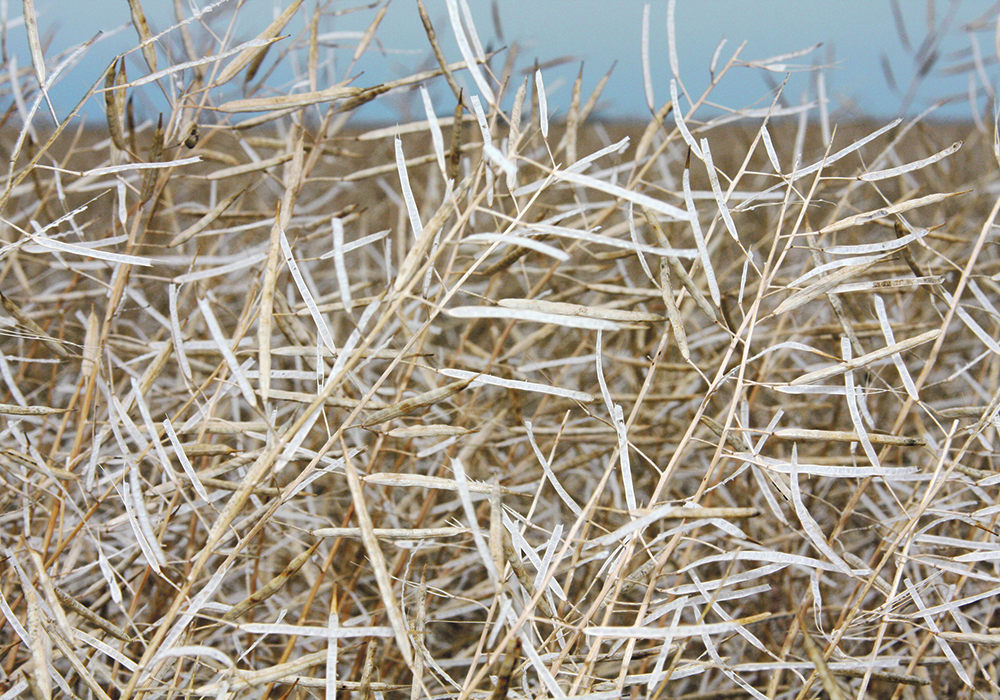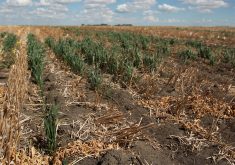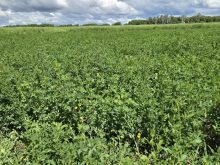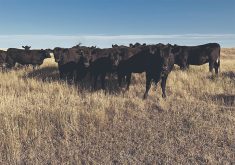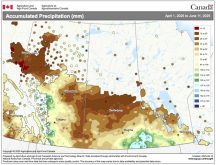Canola producer groups and industry work toward a tool to help manage harvest losses from Prairies’ most valuable crop
Nicolea Dow found 2020 to be a particularly exasperating year for growing canola at her farm near Portage La Prairie, Man.
Blistering summer heat and ill-timed rains meant green stems mixed with over-ripe plants whose pods had already burst, spawning growth of canola seedlings between the mature plants.
Prolonged, high winds while the crop was maturing added to the grief. Dow cited a Manitoba Agriculture report that showed wind losses in both swathed and straight cut fields. The community of Snowflake near the United States border saw 137 days with winds above 50 kilometres an hour.
Read Also

House ag committee to undertake several studies
The House of Commons standing agriculture committee has set its agenda for the coming months. Members began the fall sitting with a two-hour update on international trade
“On my farm we had… a lot of loss we had experienced, at least for me, than in any other year of straight cutting,” she said. “There were sections of the field that were so green we had to leave them.”
Dow was part of the panel on canola shattering at Canola Week, held online on Dec. 1. She is a director on the board of the Manitoba Canola Growers and serves on the committee to develop the new canola shatter rating.
The rating is meant as a harvest management tool, another one in the box to help farmers toward the 52 bushels per acre yield goal of the Canola Council of Canada.
Dow said her fields were typical of those in the area and a bit of a humbling experience for her and her neighbours. They had five or six years of straight cutting under their belts, ever since the first pod shatter resistant canola varieties came out.
“We thought we had a good handle on it, and then suddenly, we realized there’s probably some knowledge gaps here,” she said. “It also highlighted a need for having some better tools for risk assessment to try to make some management decisions at harvest time.”
The need to mitigate the shattering problem was a big topic for conversation at the Manitoba Canola Growers board meeting. The decision was made to bring a motion forward to the Western Canada Canola/Rapeseed Recommending Committee to get to work on a pod shatter rating system.
“Ratings like this are not the direct purview of the WCC/RCC, but it was a place where all of the right people were,” Dow said.
A subcommittee was formed to look at the issue. It includes representation from the provincial commodity groups, Ag Canada, the Canola Council of Canada (CCC), as well as strong representation from crop breeders and private seed companies.
The task was to get to the root of the frustrations to identify farmers’ real needs and lay these alongside those of the seed companies. The rating would be voluntary, so it had to work for everyone to give it any chance of being widely adopted. It also needed to be well understood, so an education program would need to be offered to all stakeholders through the CCC.
The group narrowed its focus to the one factor that mattered: harvest loss from shattering.
Although there’s a lot of things that are very environmental, very out of our control, this is the factor that we really dialed in on that we could assign a rating to,” Dow said.
She added that this approach is similar to canola cultivar disease rating systems (e.g. S, MR, R). It will provide farmers with a clear way to assess cultivars they are considering, from the time they are buying seed and as they manage the crop throughout the growing season to harvest.
CCC Resource Manager for Crop Production and Innovation Taryn Dickson explained some of the variables that went into developing the scale, which gives canola varieties a value from one to nine, ranging from high risk to low risk of shatter.
In her presentation, revealed the graphic illustration proposed for the new shatter rating guide, including check varieties for illustration.
For example, 45H33 has a value of four on the scale, while L255PC gets an eight. Swathing is recommended for cultivars rated four or under. 45H33, although it is no longer on the market, has a several years of performance data behind it and was therefore chosen as a check variety.
Dickson emphasized that the guide is intended to help farmers assess risk of pod shatter and not pod drop, which is when the stem holding the seed pod fails and it drops, intact, to the ground.
While both have a genetic component, pod drop is influenced more by environmental conditions while shatter is highly related to genes. This has made it the better target for crop breeders looking to develop varieties that prevent crop loss. Some cultivars are highly resistant to shattering, while others have some intermediate level of resistance. Farmers can factor this in with the deep knowledge they have of their own fields as well as recommendations from their seed retailers.
“Simply put, canola cultivar A may not be equal to canola cultivar B when it comes to shattering and therefore should not be treated equally either,” Dickson said, noting that any cultivar, regardless of rating, will run into problems if left out too long.
This underlines the goal of the shatter rating system as another tool in the canola grower’s risk management toolbox.
“The ratings are not a promise or performance guarantee,” she said. “We still suggest that growers consult their retailers for a recommendation.”
The shatter rating system will be considered at the next WCC/RCC meeting on Dec. 7. Once approved, materials will be made publicly available on the CCC website at www.canolacouncil.org



